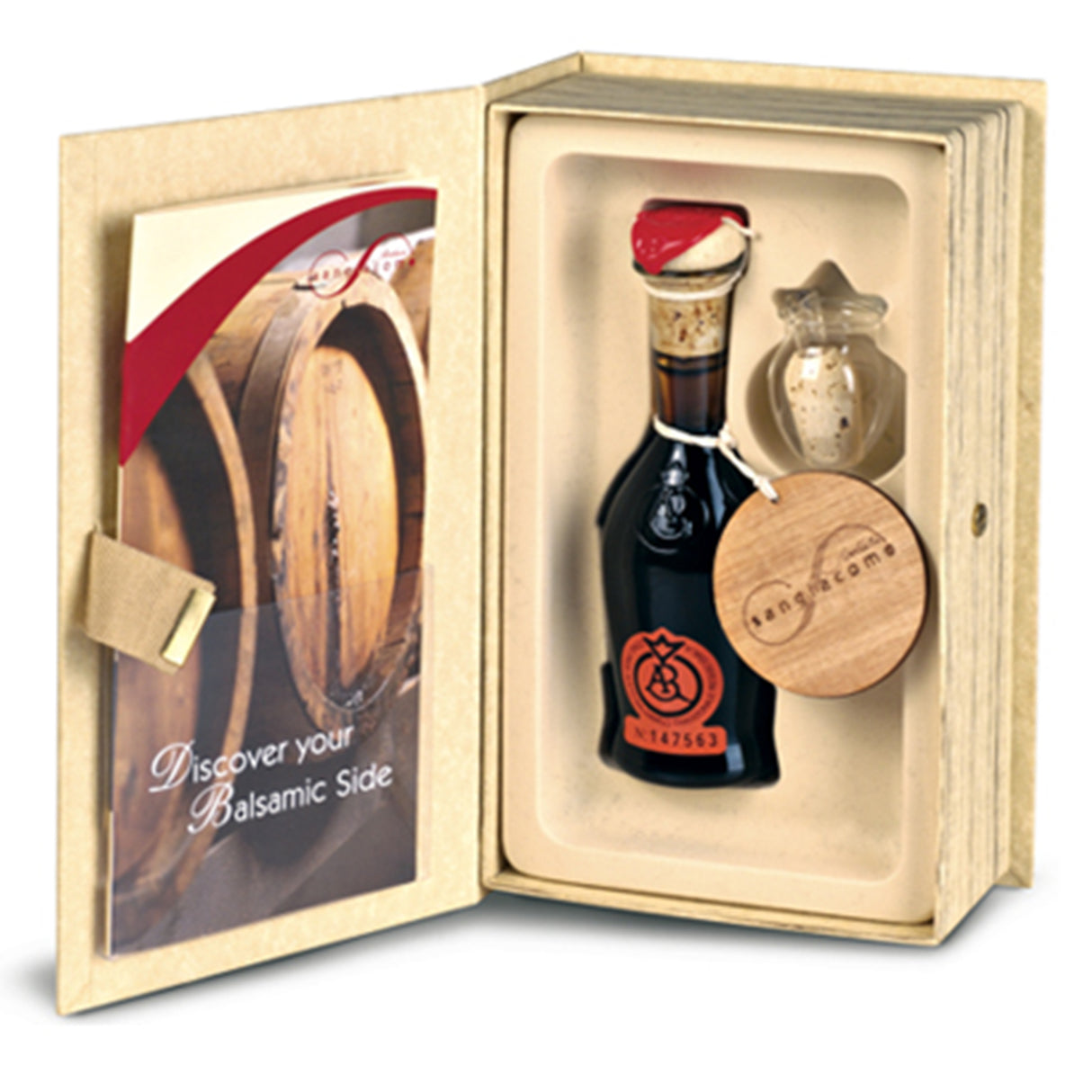Traditional Balsamic Vinegar of Reggio Emilia (Orange Seal) - San Giacomo
Traditional Balsamic Vinegar of Reggio Emilia (Orange Seal) - San Giacomo - 100ml is backordered and will ship as soon as it is back in stock.
Couldn't load pickup availability
Description
Description
Ingredient
Cooked Grape Must
Production
The Traditional Balsamic Vinegar of Reggio Emilia is obtained simply by fermenting the sugar and acid of the cooked must. However, the secret of Reggiano Balsamic lies in its ageing process, which takes place for a minimum of 12 years.
While the production of common vinegar is fermented from wine, the esteemed Reggio Emilia ABT is fermented using cooked must. The production takes place in wooden casks arranged in sets. The three phases of vinegar production are fermentation, oxidation and aging. Casks mostly made of oak, chestnut, mulberry, cherry, ash, and wormwood are used, each one contributing a particular aroma to the vinegar.
Taste & Usage
The Bollino Aragosta is known for being tart, less sweet and slightly more acidic compared to the other seals under the Reggio Emilia Balsamic line. Thanks to its delicate fragrance and acidity, it can be used to enrich carpacci (thinly sliced rare meats), pinsimoni, and salads. Furthermore, it can be used to add flavour at the end of cooking, such as to dishes containing crustaceans, lamb, chicken breast and rare red meats. It is also recommended for cooking wild game and poultry.
Historical Origins of Reggio Emilia
With the Traditional Balsamic Vinegar of Reggio Emilia (recognised in 1987 by a ministerial decree) you enter the highest gastronomic tradition where an almost alchemist wisdom has created a tradition passed from generation to generation. The monk Donizone, who lived at the same time of Countess Matilde, remembered a "laudatum acetum" in the XII century that was given as a gift by Canossa to the Emperor inside a silver bottle. The documented history of Reggio’s balsamic vinegar dates back to the Renaissance period, starting from the creation of the initially noble then bourgeoisie tradition of holding a family vinegar deposit where to age the boiled must of local grapes.



